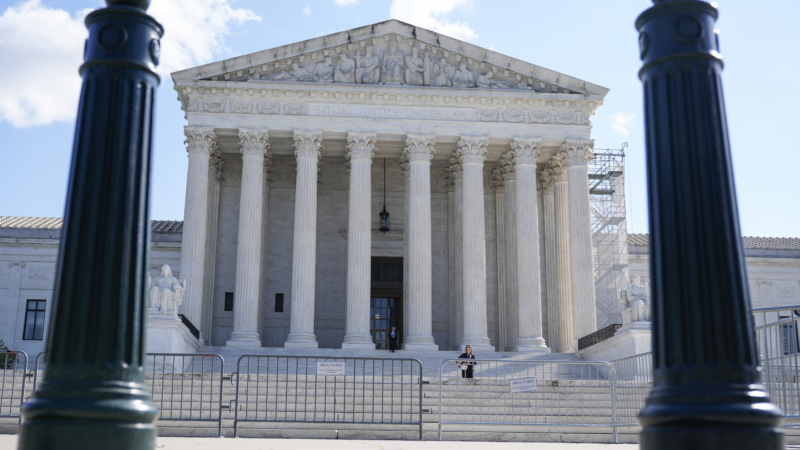How will China impact the future of climate change? You might be surprised

The two biggest climate polluters in the world are China and the United States.
The U.S. is preparing for a second presidential term for Donald Trump, who has called climate change a hoax and federal investments in climate solutions a “green new scam“.
In China, it’s a different story. China has made it clear it plans to be at the forefront of manufacturing climate solutions–and selling them around the globe.
China is the world’s largest producer of renewable energy, now constructing almost two thirds of all large-scale wind and solar power, according to nonprofit Global Energy Monitor.
And China is spreading climate solution technologies across the developing world. Walk into an electric vehicle showroom in Colombia, the Dominican Republic, or Kenya these days, and the car on offer is likely made in China.
“They’ve set up a situation where it’s good for them to sell clean energy technologies to the world,” says Alex Wang, a professor of law at UCLA focused on Chinese climate policy. “It’s very good economically, and it’s good reputationally, and it’s good environmentally.”
But while China is now the largest producer and distributor of climate solutions technologies — a key moneymaker for its troubled economy — the country still gets more than half its power from coal. “Which happens to also be the dirtiest fossil fuel,” says Li Shuo, director of the China climate hub at the Asia Society, a nonprofit.
As global leaders gather at the annual United Nations climate summit in Azerbaijan, countries see the U.S. under a lame-duck Biden administration with less clout. Meanwhile, China is signaling an increased role in climate diplomacy and continued leadership in international climate investments, despite its complicated relationship with coal.
China’s steady, long-term investments in climate solutions will make it harder for the U.S. to compete in these industries, Li says. “The U.S. does not want to get into a table tennis game with China, because that game the U.S. cannot win,” he says.

Good for the planet, and the Chinese economy
For the Chinese government and its private sector, investing in climate technologies makes business sense. China’s economy is in a slowdown, but the country’s climate and energy sector is a bright spot driving economic growth.
The Chinese government made investments 15 to 20 years ago in climate technologies that are paying off now, Wang says. “They dominate solar, wind, batteries, electric vehicles,” he says.
In September alone, China installed about 20 gigawatts of solar energy, according to the Chinese government. That’s enough electric power for about 3.6 million U.S. homes. In all of 2023 the U.S. added roughly the same amount of solar power – 19 gigawatts, according to the U.S. government.
Now China is making profits selling climate technologies like electric vehicles in Southeast Asian, African, and Latin American markets.
There’s a business strategy and a diplomatic strategy here, Li says. In addition to being moneymakers, climate investments and technology sales help China build diplomatic ties.
In a speech at the U.N. climate summit in Azerbaijan, Chinese Vice Premier Ding Xuexiang said China mobilized more than $24 billion for developing countries since 2016 to help their response to climate change.
Li says China is signaling it will take more of a leadership role to ensure developing countries — which did the least to cause global warming — get much-needed climate funds.
Meanwhile, under Trump, the U.S is expected to retreat from climate diplomacy. Under his first term, Trump pulled the U.S. out of the global climate treaty, the Paris agreement. President Biden signed an order his first day in office returning the U.S. to the agreement. Climate experts expect Trump to remove the U.S. again.
The renewable energy plus coal equation
As part of the Paris climate treaty, countries have to announce targets to make deeper cuts to their own climate pollution by 2035. The hope is that all the pollution cuts combined will limit the world’s warming to 1.5 degrees Celsius compared to average global temperatures from the late 1800s. Beyond that limit, extreme weather like heat waves and storms is expected to get far worse, scientists say.
For the world’s biggest polluter, the size of China’s pollution cuts will have global consequences, Li says. “It’s really, I think, the single most important issue to decide whether the world has a chance to stay at 1.5 degrees,” he says.
There are some good indicators China will make big cuts. In 2020 the country promised to build 1,200 gigawatts of renewable energy by 2030, roughly the same electricity generating capacity of the whole United States. China recently announced it reached the goal, six years ahead of schedule.
On the other hand, China has built many coal plants domestically in recent years, says Ye Huang, China researcher at Global Energy Monitor. Last year China was responsible for 95% of coal power construction that broke ground.
Still, she says, China isn’t using all that planet-heating coal power to its full potential. Instead the country increasingly uses coal plants as backup when solar or wind plants aren’t working, or when there is less hydropower available because of droughts, says Jeremy Wallace, professor of China studies at Johns Hopkins University.
“You might think that if you built a big power plant, you would run it all the time,” Wallace says. “In fact, the average Chinese coal plant is run at about 50 percent capacity. That is, half the time it’s operating and half the time it is not operating.”
But there are regional forces pushing to maintain coal as a big part of China’s energy mix, and keep millions of coal jobs. To meet climate goals, China will have to reckon with those forces, Li says.
“In this regard China is not that different from the United States. China has its own West Virginia,” Li says. “You have local interests, you have important provinces that are heavily reliant on coal.”

A global green race
Despite headwinds from coal interests, many climate experts are optimistic China will adopt an ambitious target for reducing climate pollution.
China’s climate pollution is projected to rise only 0.2% this year, leading many to speculate its pollution levels will peak soon, maybe even next year. Wallace and Li expect China to announce a 2035 target that reduces climate pollution 25%-30% from the country’s peak.
Whether the U.S. will announce its target in the remaining weeks of the Biden administration is unclear.
Li says an ambitious Chinese target would be a win for the planet, China’s economy, and climate solution technology. “It will actually facilitate further growth and deployment of renewable energy and other clean technologies,” Li says, “put China even further ahead of the global green economic race.”
Transcript:
A MARTÍNEZ, HOST:
President-elect Trump is signaling his new administration will reverse many of the climate investments pushed by President Biden. One country is going in a different direction, with big implications for the world. Here’s NPR’s Julia Simon.
JULIA SIMON, BYLINE: Walk into an electric vehicle showroom in Bogota, Colombia…
UNIDENTIFIED PERSON #1: (Speaking Spanish).
SIMON: …or Nairobi, Kenya…
UNIDENTIFIED PERSON #2: (Speaking Swahili).
SIMON: …And in many cases, the EVs on sale were made by Chinese companies.
ALEX WANG: China is just a manufacturing powerhouse.
SIMON: This is Alex Wang, law professor and China expert at UCLA.
WANG: They dominate solar wind batteries, electric vehicles. They’ve sort of set up a situation where it’s good for them to sell clean energy technologies to the world.
SIMON: Says China’s investments in climate solutions at home and around the world are strategic. For one, these technology sales help China build key relationships with countries in Africa, Latin America, Southeast Asia, and climate solutions are a big moneymaker for China. They’re one of the few drivers of growth in the troubled Chinese economy. In recent decades, the Chinese government made big investments in batteries, wind and solar manufacturing. While the U.S. is building about 7% of global wind and solar projects, China is building about 64%. Here’s Ye Huang of the nonprofit Global Energy Monitor.
YE HUANG: It’s basically 20 wind and solar farms per week, and it’s growing.
SIMON: Still, she says, China gets more than half its power from coal, and it continues to build coal plants. But Jeremy Wallace at Johns Hopkins notes those coal plants are increasingly used as backup power, particularly when hydropower is unavailable because of droughts.
JEREMY WALLACE: The average Chinese coal plant – half the time, it is not operating, and so it’s not actually burning coal. Having a coal plant just sit around does not produce emissions.
SIMON: In fact, Wallace says the growth of renewable energy means it’s likely China’s emissions will peak soon – maybe this year or next. Right now, global leaders are in Azerbaijan at the annual U.N. climate summit. The U.S. is at the summit, but they don’t have as much standing, says Li Shuo of the Asia Society. He says countries know Trump plans to roll back climate diplomacy. As for China, he says…
LI SHUO: I think China is willing to step in and to play a larger role.
SIMON: In the next few months, countries will submit targets for cutting climate pollution as part of the Paris climate agreement. Wallace thinks it’s likely China will set an ambitious target for cutting emissions. It’s still unclear if the U.S. will submit a target. China’s investments to reduce climate pollution are good for its economy, Li says. And, he adds, if the U.S. cuts federal support for climate technologies, it will be harder for the U.S. to compete with China in the future. Julia Simon, NPR News.
Millions face wintry weather for what could be a record-setting holiday travel season
More than 119 million people are expected to travel for Christmas and Hanukkah, which both fall on the same day this year, through the New Year, according to AAA.
Review by Senate Democrats finds more unreported luxury trips by Clarence Thomas
A report by Democrats on the Judiciary Committee found additional travel taken in 2021 by Thomas but not reported on his annual financial disclosure, including trips on private jets and a yacht trip.
Where did Barry Jenkins feel safe as a kid? Atop a tree
Director Barry Jenkins is best known for films like "Moonlight" and "If Beale Street Could Talk." On Wild Card, he opens up about where he felt the safest as a kid.
Israeli strikes across Gaza kill at least 20, including five children
Israeli strikes across the Gaza Strip overnight and into Sunday killed at least 20 people, including five children, Palestinian medical officials said.
I discovered one way to fight loneliness: The Germans call it a Stammtisch
Modern life can be lonely. Some are looking to an old German tradition – of drinking and conversation – to deepen connection through regular meetups.
This Christmas I’ll be grieving. Here’s how I’ll be finding joy.
Since her husband's death, newscaster Windsor Johnston has been looking for ways to recapture joy and continue her healing journey — one that's taken her to a place she'd never expected.





